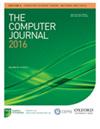SS6: Online Short-Code RAID-6 Scaling by Optimizing New Disk Location and Data Migration
IF 1.5
4区 计算机科学
Q4 COMPUTER SCIENCE, HARDWARE & ARCHITECTURE
引用次数: 2
Abstract
Thanks to excellent reliability, availability, flexibility and scalability, redundant arrays of independent (or inexpensive) disks (RAID) are widely deployed in large-scale data centers. RAID scaling effectively relieves the storage pressure of the data center and increases both the capacity and I/O parallelism of storage systems. To regain load balancing among all disks including old and new, some data usually are migrated from old disks to new disks. Owing to unique parity layouts of erasure codes, traditional scaling approaches may incur high migration overhead on RAID-6 scaling. This paper proposes an efficient approach based Short-Code for RAID-6 scaling. The approach exhibits three salient features: first, SS6 introducesSS6:通过优化新磁盘位置和数据迁移的在线短码RAID-6扩展
由于具有出色的可靠性、可用性、灵活性和可伸缩性,独立(或廉价)磁盘(RAID)的冗余阵列被广泛部署在大型数据中心中。RAID扩展可以有效缓解数据中心的存储压力,提高存储系统的容量和I/O并行性。为了恢复所有磁盘(包括新旧磁盘)之间的负载均衡,通常会将部分数据从旧磁盘迁移到新磁盘。由于擦除码的奇偶校验布局独特,传统的扩展方法在RAID-6扩展时可能会产生很高的迁移开销。提出了一种基于短码的高效RAID-6扩展方法。该方法展示了三个显著特性:首先,SS6引入了$\tau $来确定应该插入新磁盘的位置。其次,SS6通过描绘迁移区域来最小化迁移开销。第三,SS6通过优化奇偶更新降低异或计算成本。数值结果和实验结果表明:(1)与Round-Robin和Semi-RR相比,SS6在离线情况下减少了数据迁移量,提高了扩展性能;(2)在两种实际i /O工作负载下,SS6减少了相对于Round-Robin和Semi-RR的总扩展时间;(3)SS6在扩展期间和扩展后的用户平均响应时间优于其他两种方法。
本文章由计算机程序翻译,如有差异,请以英文原文为准。
求助全文
约1分钟内获得全文
求助全文
来源期刊

Computer Journal
工程技术-计算机:软件工程
CiteScore
3.60
自引率
7.10%
发文量
164
审稿时长
4.8 months
期刊介绍:
The Computer Journal is one of the longest-established journals serving all branches of the academic computer science community. It is currently published in four sections.
 求助内容:
求助内容: 应助结果提醒方式:
应助结果提醒方式:


